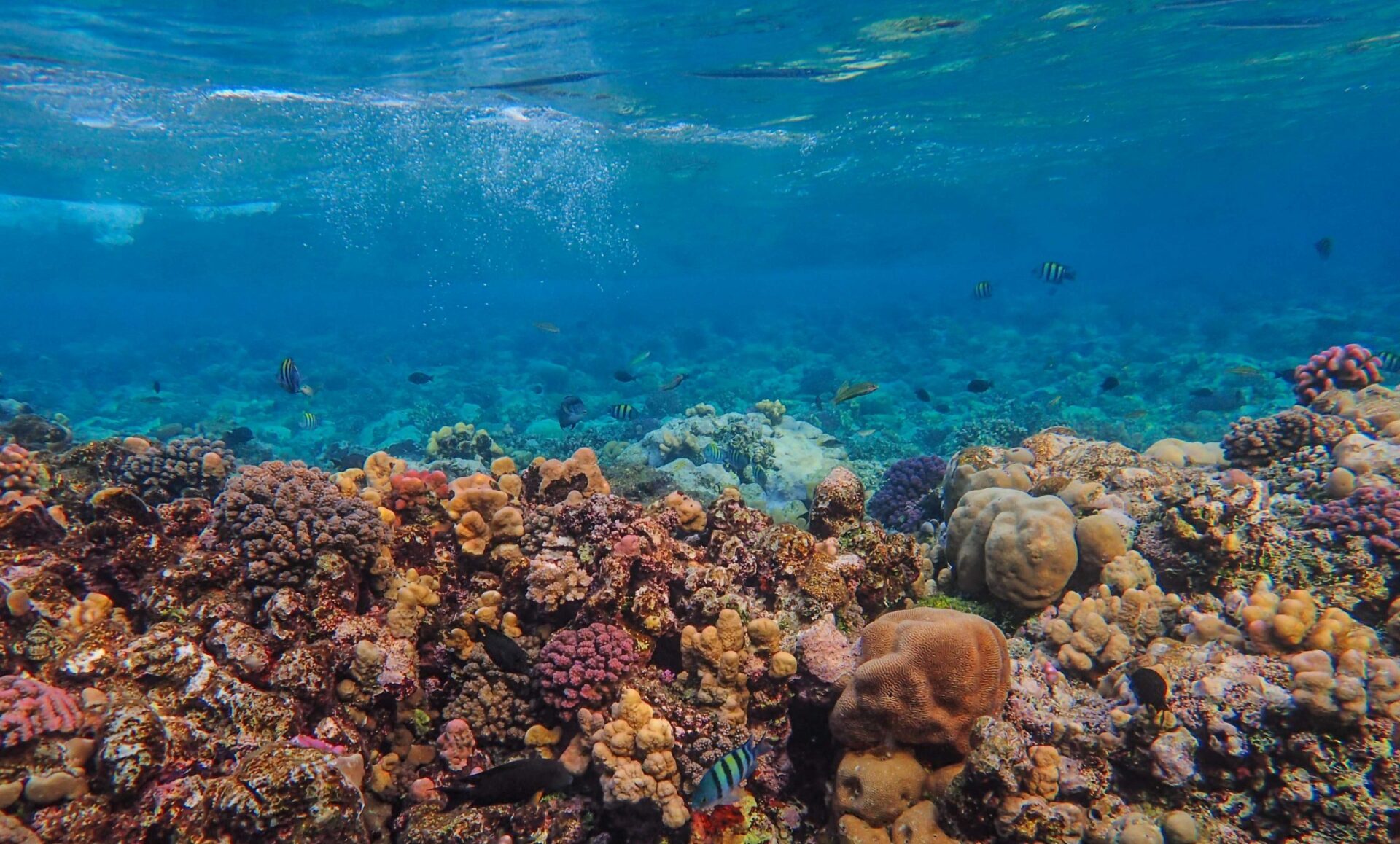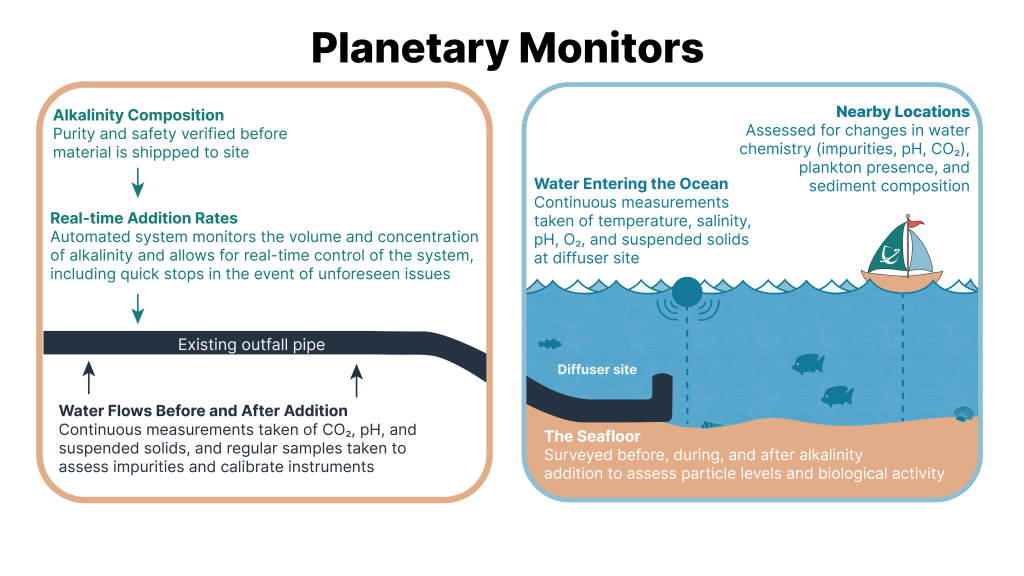Monitoring Biological Systems
Planetary is confident that our OAE projects are safe for marine life. For information about how we have designed our process to minimise risk at every step, read our process safety page.
We monitor each step of our field projects to identify any unexpected ecosystem interactions or unforeseen changes before they can harm the marine environment. This includes conducting inspections of the ocean that are specifically designed to monitor for biological health.
These inspections are designed to detect four main warning signs: water clouding, magnesium hydroxide accumulation, increases in impurities, and changes in the composition of the ecosystem. If we see evidence of any of these warning signs, we will know that we are adding too much magnesium hydroxide too quickly, or that our magnesium hydroxide has been contaminated, and we will pause our activities and re-assess.
Some of the most important monitoring we do is on the species at the base of the food web: plankton. These small organisms are most likely to be impacted by minute changes to the ecosystem, and we pay particular attention to their communities.
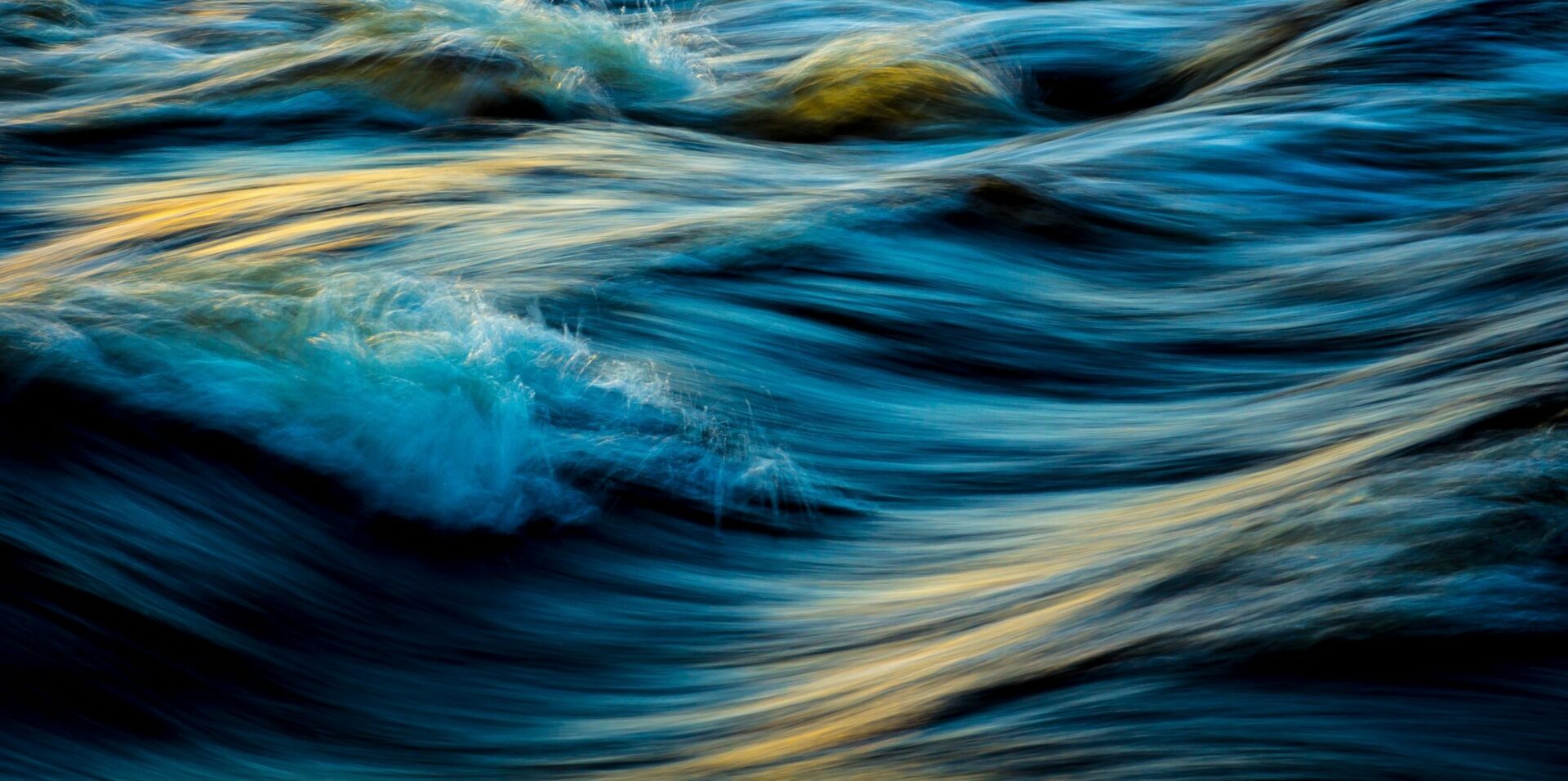
Our biological monitoring activities are tailored
to the needs of individual sites.
We use the monitoring techniques that are available to us and
appropriate for the region and that most effectively enable us to identify unexpected changes
and validate the safety of our projects.
Sampling
Planetary routinely takes samples of ocean water at the outfall site. These samples are used to analyse ocean chemistry (monitoring pH, CO2 levels, and the presence of impurities) and to analyse the abundance and community composition of phytoplankton.
We also take samples of the seafloor in the form of sediment cores. We test sediment cores for trace metals and monitor for magnesium hydroxide settling.
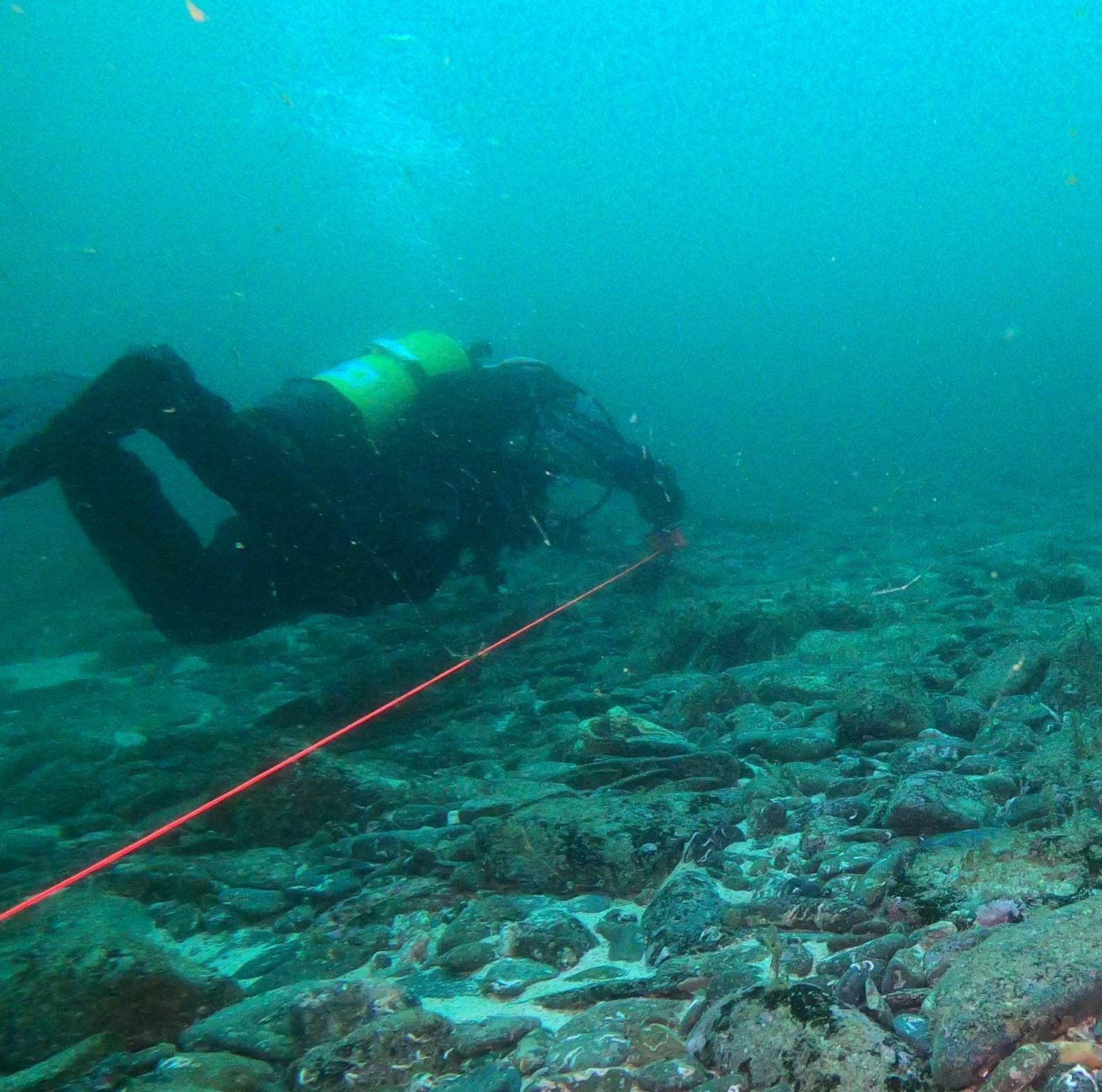
Dive Teams
Scuba diving surveys allow us to conduct more intensive inspections of the seafloor at some sites.
These surveys can be conducted before, during, and after a project, near the outfall or at sites sequentially further in distance from the outfall.
Dive team studies provide baseline and continued analysis of an area’s species abundance and diversity.
Species diversity refers to the total number and distribution of different species in a community, and consists of two primary measures:
- Species Richness. This is a measure of how many species are in a given unit of area.
- Species Evenness. This measures the composition of an environment. If an ecosystem houses many species, but most of its organisms are of just one species, that is an uneven species composition.
Areas with greater biodiversity are typically more stable, healthier, and more resilient to change. Our dive studies allow us to monitor for any biodiversity changes, positive or negative, that the local ecosystem might experience.
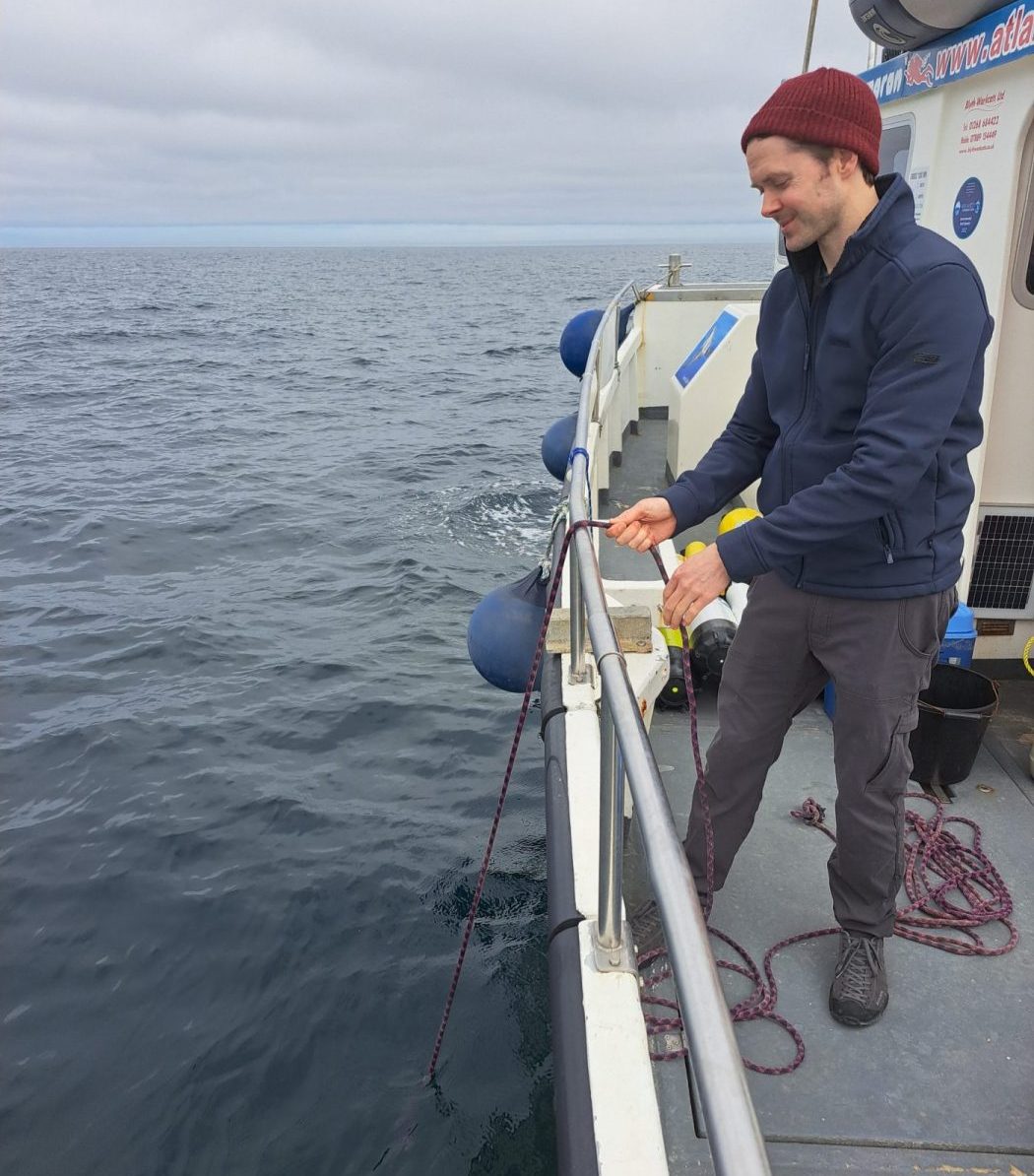
Drop Cameras
When appropriate, cameras can be lowered off buoys and boats at several points near and far from the outfall.
We use these cameras to check for particle accumulation and other visual changes.
Drop camera inspections can be conducted regularly after the alkalinity additions have started.
Further Monitoring
As larger scale tests are planned, Planetary will adapt and expand our monitoring.
We are closely following scientific advances in hopes of integrating new techniques that can help us monitor for biological safety, and we will integrate emerging monitoring tools and techniques into our practices when appropriate.
Examples of techniques we are following, actively researching, or even trialing at our field sites include:
- Environmental DNA (eDNA) studies, which can provide information about the presence of marine biota ranging from bacteria to whales and identify any shifts in the ecosystems
- Cytometry monitoring, measuring for phytoplankton ‘health’ using moored sensors
- Continuous shellfish monitoring systems, to identify any potential positive or negative health changes
- Marine mammal tracking programs, to assess movement patterns in or around our sitesWe wish to work with local citizen scientists who notice changes in animal sightings or marine activity in the region near the diffusers. If you have observed anything of note in your area following an alkalinity study, please contact us.
We publish project-specific monitoring plans on the appropriate project pages of our website and update them as they evolve. Updates to the frequency and nature of our monitoring practices will be informed by the results of our studies, and by the recommendations of regulators, trusted experts, and new research.

